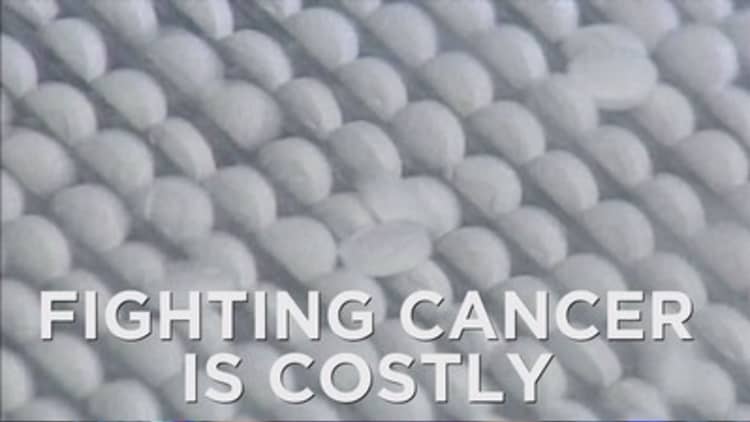
As drug prices continue to fall under ever-increasing scrutiny, spending on cancer medicines has hit a new milestone: $100 billion in 2014.
That's up more than 10 percent from 2013, and up from $75 billion five years earlier, according to a report published Tuesday from the IMS Institute for Healthcare Informatics. Targeted therapies, which take aim at specific drivers of cancer, now account for almost half of total spending, IMS said.
And as more new cancer drugs get approved, spending is likely to accelerate. The compound average growth rate on cancer medicines in the last five years has been 6.5 percent globally, according to IMS. The research firm predicts that rate to be 6 percent to 8 percent through 2018.
Read MoreBiotech run may not be over:Analyst
"Earlier diagnosis, longer treatment duration and increased effectiveness of drug therapies are contributing to rising levels of spending on medicines for cancer care," IMS researchers, led by executive director Murray Aitken, wrote in the report's executive summary. "Measures of value continue to be tested by payers and providers who, in some health systems, most notably the U.S., have growing concerns about the financial burden faced by cancer patients."
Forty-five new drugs for cancer hit the market between 2010 and 2014, including 10 last year alone, IMS said. Two of those are so-called immunotherapies, a hot new class that harnesses the immune system to fight cancer. They are Opdivo from Bristol-Myers Squibb and Keytruda from Merck. Both are priced at $12,500 a month.
Pharmacy benefits manager Express Scripts, which effectively pitted new medicines for hepatitis C against one another to garner discounts last year, has said one of its next targets will be cancer medicines.
But with those high price tags come significant improvements in outcomes. IMS notes two-thirds of Americans diagnosed with cancer now live at least five years, versus just more than half in 1990.
"Although the changes are incremental year to year, cumulatively, more patients are gaining years of life," IMS said. It notes an 18 percent improvement in the five-year survival rate in prostate cancer from 1990 to 2010, a 12 percent improvement in liver cancer and 8 percent in breast cancer.
Read More
Drug prices, particularly in cancer, have been a brewing concern for years. And with the biggest annual cancer research conference, ASCO—the American Society of Clinical Oncology meeting—just weeks away in Chicago, it's bound to continue to be a major topic of discussion.


